本研究制备了一种氨基改性黄麻秆吸附剂(AF-JS),并将其应用于同时去除水体中的重金属Cr(Ⅵ)和偶氮染料橙黄G(OG),考察了AF-JS对Cr(Ⅵ)和OG的吸附动力学和吸附等温线,以及Cr(Ⅵ)和OG在AF-JS表面的竞争吸附行为。
1 材料和方法
1.1 材料
黄麻秆(JS)来源于中国农业科学院麻类研究所的试验基地。将新鲜收获的JS清洗干净后于60 ℃烘干,研磨过筛,得到尺寸为100~300 μm的粉末。所有化学试剂,包括NaOH、H2SO4、HCl、K2Cr2O7、N,N-二甲基甲酰胺(DMF)、表氯醇、二乙基三胺(DETA)、三乙胺、二苯羰酰二肼、橙黄G(OG)等均购自国药化学试剂公司,分析纯。
1.2 AF-JS吸附剂的制备
将JS粉末用0.5 mol/L的NaOH浸泡,然后用去离子水清洗至中性,于60 ℃烘干。称取NaOH预处理后的JS粉末,将其均匀分散于表氯醇和DMF介质中,并将上述混合液搅拌一定时间,再向其中逐滴加入适量DETA后,继续搅拌,加入适量三乙胺,交联反应完全后,离心收集产品,并用去离子水清洗数次,冷冻干燥24 h,研磨过筛,得到AF-JS。
1.3 吸附剂表征
用JSM-5600 LV型扫描电镜表征吸附剂样品的形貌,用Tristar 3020型体积分析仪测定样品的BET比表面积,用IRAffinity-1型傅里叶变换红外分析仪(岛津)在4 000~400 cm-1波数范围内扫描样品的红外光谱,样品的表面元素组成用X射线光电子能谱分析仪(赛默飞世尔科技公司)来表征。
用固体添加法〔11〕测定吸附剂AF-JS在不同pH条件下的Zeta电位。将50 mL 0.01 mol/L的KNO3溶液加到一系列100 mL的锥形瓶中,用0.1 mol/L的HCl或NaOH精确调节上述KNO3溶液的初始pH为2~10,然后分别在不同初始pH的KNO3溶液中加入0.1 g AF-JS,于25 ℃振荡24 h后,用pH计(pHS-3C型)测定溶液的最终pH,并利用ΔpH对初始pH作图,即为AF-JS在不同pH条件下AF-JS的Zeta电位,且ΔpH=0时的初始pH为AF-JS的pHPZC。
1.4 吸附实验
将加有样品溶液的50 mL锥形烧瓶置于(25±1)℃、150 r/min的摇床中进行批量吸附实验。用0.1 mol/L HCl和NaOH溶液调节pH,用1.0 g/L的AF-JS吸附Cr(Ⅵ)和OG溶液。当Cr(Ⅵ)在酸性溶液中与二苯基碳酰二肼反应后生成紫色络合物溶液,用紫外可见分光光度计在540 nm波长处测定吸光度,并计算残留的Cr(Ⅵ)浓度。OG残留浓度可直接使用可见分光光度计在475 nm波长下进行测量计算。污染物的吸附容量计算见式(1)

式中:qt——污染物的吸附容量,mg/g;
c0——污染物的初始质量浓度,mg/L;
ct——吸附后的污染物残留质量浓度,mg/L;
v——污染物溶液的体积,L;
m——AF-JS的投加量,g。
2 结果与讨论
2.1 吸附剂的表征
通过氮吸附-解吸等温线计算得到的黄麻和AF-JS的结构参数,结果见表1。
表1 黄麻和AF-JC的结构参数
| 样品 | BET表面积/(m2·g-1) | 平均孔径/nm | 总孔容/(cm3·g-1) |
| 黄麻 | 75.84 | 5.703 | 0.108 1 |
| AF-JC | 52.03 | 6.518 | 0.084 8 |
黄麻和AF-JS的SEM见图1。
图1
由图1可知,AF-JS的表面比黄麻的表面更平滑,进一步证实了改性后AF-JS的BET表面积确实存在变小的趋势。
AF-JS的表面电荷能显著影响污染物在其表面的吸附,且AF-JS在不同pH条件下带电性不同,本研究考察了AF-JS在不同pH下的Zeta电位,结果表明,AF-JS在溶液中的Zeta电位随pH的降低而增大,而当pH > 5.0时,AF-JS表面带负电荷。且AF-JS的pHPZC大约为5.0,高pHPZC表明AF-JS具有高的正表面电荷和吸附能力〔12〕,这可能是因为AF-JS表面的氨基发生了质子化,这有利于带负电荷的铬酸盐离子和阴离子染料在其表面的吸附。
黄麻和AF-JS的FTIR见图2。
图2
图3
由图3(a)可知,氨基改性后的黄麻中的元素成分与黄麻本身相似,包括C、N、O等,但与黄麻相比,改性后的AF-JS中N元素含量明显增加,这可能与氨基的成功引入有关。
2.2 pH的影响
将1.0 g/L AF-JS加入到20 mL 200 mg/L不同初始pH的Cr(Ⅵ)(或500 mg/L OG)溶液中振荡反应60 min,Cr(Ⅵ)溶液的初始pH调节为2~9,OG溶液的初始pH调节为2~10,考察溶液初始pH对Cr(Ⅵ)吸附效果的影响。
2.3 吸附动力学研究
为了阐明吸附反应过程和吸附剂对污染物的吸附去除机制,应用伪二阶动力学模型拟合吸附动力学数据。考察接触时间对AF-JS吸附Cr(Ⅵ)和OG行为的影响,结果见图4。
图4
伪二级动力学模型拟合AF-JS吸附Cr(Ⅵ)和OG过程的动力学参数见表2。
表2 伪二级动力学模型参数
| 污染物 | qe/(mg·g-1) | k/(g·mg-1·min-1) | R2 |
| Cr(Ⅵ) | 82.65 | 0.011 0 | 0.999 2 |
| OG | 434.78 | 0.000 2 | 0.999 6 |
由表2可知,AF-JS吸附剂对Cr(Ⅵ)和OG的吸附相关系数R2分别为0.999 2和0.999 6,表明AF-JS吸附Cr(Ⅵ)和OG的过程很好地遵循了伪二级动力学模型。
2.4 等温吸附研究
用Langmuir和Freundlich等温吸附模型模拟Cr(Ⅵ)和OG在AF-JS表面的吸附状态,考察Cr(Ⅵ)和OG的Langmuir和Freundlich等温方程模拟与实验数据的比较,结果见图5。
图5
Langmuir和Freundlich等温吸附模型参数见表3。
表3 Langmuir和Freundlich参数
| 污染物 | Langmuir | Freundlich | |||||
| KL/(L·mg-1) | qm/(mg·g-1) | R2 | KF/(mg·g-1) | n | R2 | ||
| Cr(Ⅵ) | 0.008 8 | 160.09 | 0.941 7 | 9.058 3 | 2.257 8 | 0.903 7 | |
| OG | 0.000 2 | 5 137.5 | 0.999 1 | 1.438 5 | 1.073 9 | 0.998 9 | |
经Langmuir等温方程计算可知,AF-JS对Cr(Ⅵ)和OG的最大吸附容量分别为160.09 mg/g和5 137.5 mg/g。比较了本研究与其他一些吸附剂对Cr(Ⅵ)和OG的吸附能力,结果见表4。
表4 不同吸附剂对Cr(Ⅵ)和OG的最大吸附容量比较
由表4可知,AF-JS对Cr(Ⅵ)和OG的最大吸附能力远高于文献报道中其他吸附剂。由此可知,本研究制备的AF-JS能有效去除水溶液中的Cr(Ⅵ)和OG,是一种具有巨大潜力的吸附剂材料。
2.5 Cr(Ⅵ)和OG的竞争吸附
将Cr(Ⅵ)质量浓度固定为100 mg/L(或将OG质量浓度固定为500 mg/L),改变OG〔或Cr(Ⅵ)〕的浓度。将1.0 g/L AF-JS加入到20 mL上述污染物溶液中,在150 r/min,(25±1)℃,且pH为6.0条件下同时吸附Cr(Ⅵ)和OG,考察Cr(Ⅵ)和OG在AF-JS表面上的竞争吸附,结果见图6。
图6
由图6可知,有OG存在条件下,Cr(Ⅵ)的吸附量随着OG浓度的增加而降低,这是因为带负电的Cr(Ⅵ)与带负电的OG之间产生了竞争吸附。当Cr(Ⅵ)存在条件下,OG在AF-JS表面的吸附行为与Cr(Ⅵ)相同。
进一步用吸附性能(R)来表示Cr(Ⅵ)和OG对彼此在AF-JS表面的吸附行为影响,吸附性能计算方法见式(5)。

式中:qb——污染物在二元体系中的吸附容量,mg/g;
qs——污染物在单组分体系中的吸附容量,mg/g。
图7
由图7可知,Cr(Ⅵ)和OG的吸附性能指标R都小于1,表明Cr(Ⅵ)和OG对彼此的吸附都有抑制作用。Cr(Ⅵ)的R值明显大于OG,说明Cr(Ⅵ)与AF-JS的亲和力大于OG,AF-JS表面吸附位点更优先与Cr(Ⅵ)吸附。
2.6 吸附剂的再生和稳定性
吸附剂的再生性和稳定性是考察吸附剂性能的一个重要指标。用NaOH溶液(pH=9)解析吸附了Cr(Ⅵ)的AF-JS吸附剂,并用乙二醇(EG)解析吸附了OG的AF-JS吸附剂。将1.0 g/L AF-JS加入到20 mL 100 mg/L Cr(Ⅵ)(或500 mg/L OG)溶液中,在150 r/min,(25±1)℃的条件下反应4 h后,离心分离AF-JS,并取上清液分析残留的污染物浓度。随后,将吸附了Cr(Ⅵ)(或OG)的AF-JS吸附剂加入到NaOH或EG溶液中,于150 r/min,(25±1)℃的条件下解吸4 h,并测定解吸再生后AF-JS对Cr(Ⅵ)和OG的吸附能力,评估AF-JS的循环利用性能,结果表明,随着再生次数的增加,Cr(Ⅵ)和OG的吸附量略有下降,可能是因为吸附剂回收过程中,吸附剂量有所损失。在第1次再生循环后,Cr(Ⅵ)和OG的去除率分别为75.64%和84.54%。而第3个循环后,Cr(Ⅵ)和OG的去除效率仍然很高(分别可达69.21%和74.98%),表明AF-JS具有可重复使用的潜力。
3 结论
本研究制备了一种新型胺基功能化黄麻秸秆复合材料——AF-JS,可用于同时去除重金属离子Cr(Ⅵ)和偶氮染料OG。XPS分析表明Cr(Ⅵ)和OG确实吸附在了AF-JS表面上,吸附剂对Cr(Ⅵ)和OG的吸附容量随pH的增加而降低。AF-JS能高效吸附Cr(Ⅵ)和OG,符合伪二级动力学模型;等温吸附实验表明,Langmuir模型对Cr(Ⅵ)和OG的吸附都有较好的拟合效果。AF-JS对Cr(Ⅵ)和OG的最大吸附容量分别可达160.09 mg/g和5 137.5 mg/g。竞争吸附实验表明,Cr(Ⅵ)和OG对彼此在AF-JS表面的吸附相互抑制。而与OG相比,Cr(Ⅵ)与AF-JS之间的亲和力更强。因此,基于AF-JS的较大吸附容量及较低成本,可考虑作为同时去除Cr(Ⅵ)和偶氮染料的优选材料。
参考文献
Cationic and anionic dye adsorption by agricultural solid waste
[J].DOI:10.1016/j.desal.2011.07.019 [本文引用: 1]
Titanium aminophosphates:synthesis, characterization and orange G dye degradation studies
[J].DOI:10.1039/C5RA19117C [本文引用: 1]
Removal of Cr(Ⅵ) from aqueous solution using modified corn stalks:Characteristic, equilibrium, kinetic and thermodynamic study
[J].DOI:10.1016/j.cej.2011.01.063 [本文引用: 3]
Biosorption of chromium(Ⅵ) from industrial wastewater onto pistachio hull waste biomass
[J].DOI:10.1016/j.cej.2010.06.032 [本文引用: 1]
Kinetics, equilibrium and thermodynamic study of Cr(Ⅵ) sorption into toluidine blue o-impregnated XAD-7 resin beads and its application for the treatment of wastewaters containing Cr(Ⅵ)
[J].DOI:10.1016/j.cej.2010.03.040 [本文引用: 1]
Adsorption of Cr(Ⅵ) and methyl orange from aqueous solutions by quaternized chitosan immobilized bentonite
[J].DOI:10.5004/dwt.2017.20385 [本文引用: 1]
Removal of Congo red, methylene blue and Cr(Ⅵ) ions from water using natural serpentine
[J].DOI:10.1016/j.jtice.2017.10.023 [本文引用: 1]
Magnetic porous carbonaceous material produced from tea waste for efficient removal of As(Ⅴ), Cr(Ⅵ), humic acid, and dyes
[J].
Equilibrium, kinetic, and thermodynamic studies of azo dye adsorption from aqueous solution by chemically modified lignocellulosic jute fiber
[J].
Fast microwave-assisted preparation of a low-cost and recyclable carboxyl modified lignocellulose-biomass jute fiber for enhanced heavy metal removal from water
[J].DOI:10.1016/j.biortech.2015.11.009 [本文引用: 1]
Equilibrium and kinetic adsorption study of the adsorptive removal of Cr(Ⅵ) using modified wheat residue
[J].DOI:10.1016/j.jcis.2010.05.057 [本文引用: 1]
Multi-walled carbon nanotubes as adsorbents for the removal of parts per billion levels of hexavalent chromium from aqueous solution
[J].DOI:10.1016/j.jhazmat.2008.12.011 [本文引用: 1]
Removal of As(Ⅲ) from water using modified jute fibres as a hybrid adsorbent
[J].DOI:10.1039/C4RA11901K [本文引用: 1]
High-capacity adsorption of dissolved hexavalent chromium using amine-functionalized magnetic corn stalk composites
[J].DOI:10.1016/j.biortech.2015.01.103 [本文引用: 3]
FTIR, Raman, and XPS analysis during phosphate, nitrate and Cr(Ⅵ) removal by amine cross-linking biosorbent
[J].DOI:10.1016/j.jcis.2016.01.079 [本文引用: 1]
Cr(Ⅵ) and Cr(Ⅲ) removal from aqueous solution by raw and modified lignocellulosic materials:A review
[J].DOI:10.1016/j.jhazmat.2010.04.060 [本文引用: 1]
Chromium(Ⅵ) adsorption from aqueous solution by Hevea Brasilinesis sawdust activated carbon
[J].
Effect of solution pH, ionic strength and temperature on adsorption behavior of reactive dyes on activated carbon
[J].
Adsorption characteristics of activated carbon for the reclamation of colored effluents containing orange G and new solid-liquid phase equilibrium model
[J].DOI:10.1021/acs.jced.6b00845 [本文引用: 1]
Simultaneous adsorption of atrazine and Cu(Ⅱ) from wastewater by magnetic multi-walled carbon nanotube
[J].DOI:10.1016/j.cej.2012.09.102 [本文引用: 1]
Adsorbent for chromium removal based on graphene oxide functionalized with magnetic cyclodextrin-chitosan
[J].DOI:10.1016/j.colsurfb.2013.01.074 [本文引用: 1]
Adsorption of chromium ions in activated carbon
[J].
Preparation and characterization of amino-functionalized nano-Fe3O4 magnetic polymer adsorbents for removal of chromium(Ⅵ) ions
[J].DOI:10.1007/s10853-010-4574-5 [本文引用: 1]
Simultaneous removal of Cd(Ⅱ) and ionic dyes from aqueous solution using magnetic graphene oxide nanocomposite as an adsorbent
[J].DOI:10.1016/j.cej.2013.04.045 [本文引用: 1]
Adsorption studies on the removal of hexavalent chromium from aqueous solution using a low cost fertilizer industry waste material
[J].DOI:10.1016/j.jcis.2009.09.065 [本文引用: 1]
Process optimization, kinetics and equilibrium of orange G and acid orange 7 adsorptions onto chitosan/surfactant
[J].DOI:10.1016/j.molliq.2014.06.007 [本文引用: 1]
Adsorption of acid dyes from aqueous solutions by the ethylenediamine-modified magnetic chitosan nanoparticles
[J].DOI:10.1016/j.jhazmat.2010.10.012 [本文引用: 1]
Simultaneous adsorption of atrazine and Cu(Ⅱ) from wastewater by magnetic multi-walled carbon nanotube
[J].DOI:10.1016/j.cej.2012.09.102 [本文引用: 1]



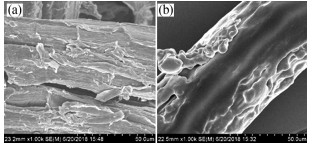
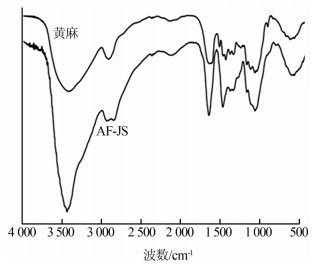
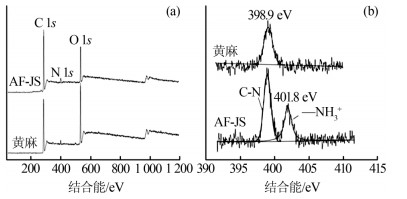
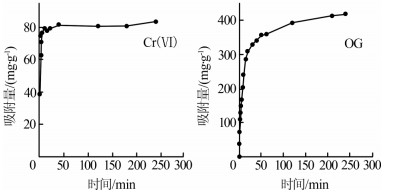
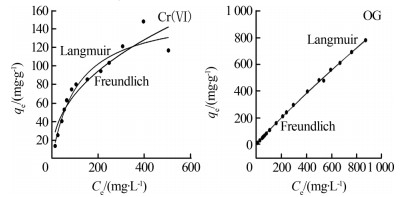
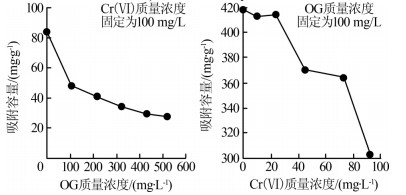
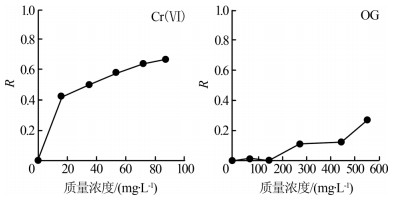


 津公网安备 12010602120337号
津公网安备 12010602120337号